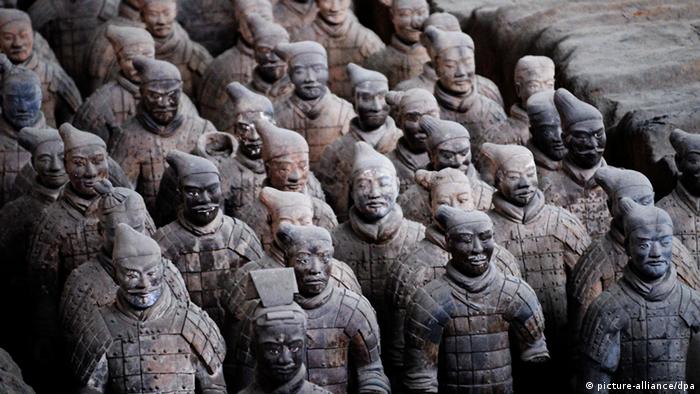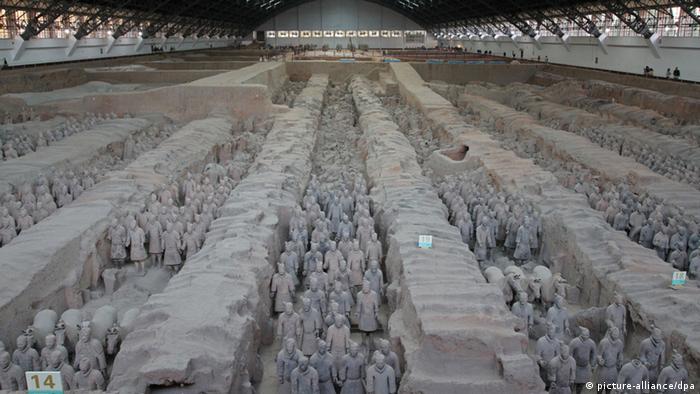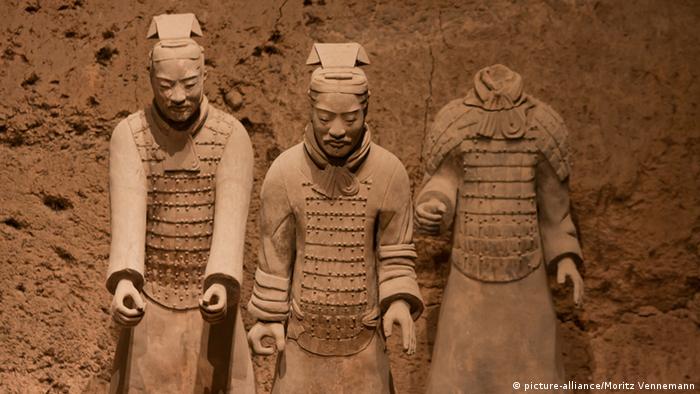The legendary «terracotta army» of the Chinese emperor will again become colored
German restorers managed to find out the composition of the paints used to paint the figures of the soldiers of the «terracotta army» of the Chinese Emperor Qin Shi Huang.

It is now the ancient Chinese warriors of the famous «terracotta army» that look menacing, but in terms of color — rather unpresentable. And once, over two thousand years ago, their clothes were not earthy gray, but bright, refined, decorated with intricate patterns. And not a single uniform was repeated! And the faces of each of the almost seven and a half thousand soldiers (this is precisely the number of this army) are different. Whatever figure is unique.
As a result of many years of painstaking scientific research, a group of restorers led by Catharina Blänsdorf from the Technical University of Munich managed to find out the features and composition of the paints that were used to paint the terracotta statues of warriors. And now German scientists are recreating the lost colors.
Together with Chinese scientists
Generals, officers, riflemen, infantry soldiers, carters. Someone is armed with a spear, someone with a crossbow, someone with a sword. They are in a fighting position, and it seems that they are about to rush into battle. About 700 thousand craftsmen worked on this grandiose army, buried together with the first emperor of the Qin dynasty — Qin Shi Huang in 210-209 BC in Xi’an, one of the four ancient capitals of China. The tomb was accidentally discovered in 1974, and since 1987 it has been under the protection of UNESCO.

About a decade and a half was spent by Katharina Blensdorf and her colleagues to analyze traces of old paint, preserved in some places on ancient sculptures and in the ground. This research work has become part of a scientific project that has been carried out for a quarter of a century together with scientists from the Chinese province of Shanxi, on the territory of which the city of Xi’an is located.
In total, twelve main pigments were identified, which were used by ancient masters to paint the figures of warriors of the «terracotta army». The palette includes yellow, bright orange, scarlet, burgundy, dark green, purple, dark blue, ocher, ivory, malachite and earthy tones.
As the Munich researcher said in an interview with the Süddeutsche Zeitung newspaper, in addition to the basic colors, there were at least 24 varieties of coloring mixtures. The thickness of the layers of paint applied to the sculptures varies from five microns to 0.5 millimeters. And the paint was applied over a special organic glaze, which the statues were covered with after firing in furnaces.
Giant burial
Over 56 square kilometers is the total area of the burial complex of Emperor Qin Shi Huang — one of the most unusual necropolises in the history of mankind. Like any gigantic construction, its construction required huge costs. Work on the «otherworldly» army of the emperor continued for more than three decades.
The ruler ordered to start building his tomb a year after ascending the throne — in 246 BC. According to the traditions of that era, and in the other world, the rulers had to stay in the environment familiar to them during their lives and surrounded by their subjects. Therefore, the emperor ordered to bury with him, among other things, life-size clay copies of his warriors, as well as statues of army horses and war chariots.
With 3D graphics
Lucas Nickel, a British sinologist and orientalist, a researcher at the University of London, does not exclude that the «terracotta army» was created under the influence of ancient Greek culture: a full-size sculpture for China of the Qin Shi Huang era is very uncharacteristic. Much attention was also paid to images of the human body in motion, which is also typical of ancient Greek masters. The variety of bright colors with which the figures of ancient Chinese warriors are painted now seems to speak in favor of the Greek influence.

Katharina Blensdorf has a different opinion. «Asians have always loved bright colors,» she said in an interview with the Süddeutsche Zeitung. In that ancient era, the use of rich, juicy paints applied in thick layers was typical not only for Western, but also for Eastern masters.
Using the latest technology, based on three-dimensional computer graphics, scientists managed to reconstruct the original appearance of the warriors. Katharina Blensdorf has already managed to recreate the full coloring of 55 soldiers of the «terracotta army». Their exact copies are presented in the Museum of copies of classical sculpture (Museum für Abgüsse Klassischer Bildwerke) in Munich. The German researcher also restored the colors of 18 kneeling archers. True, copies of these sculptures are made in a fivefold reduced size.
